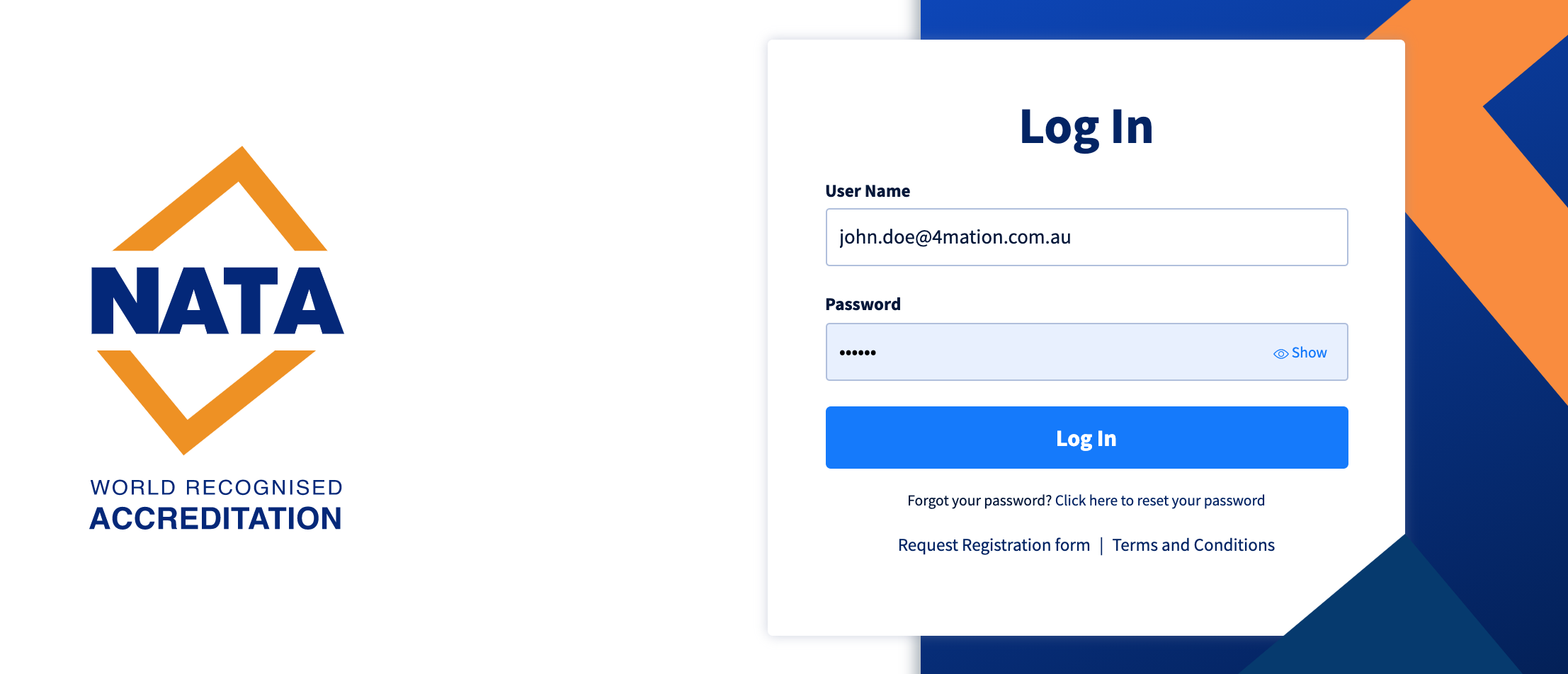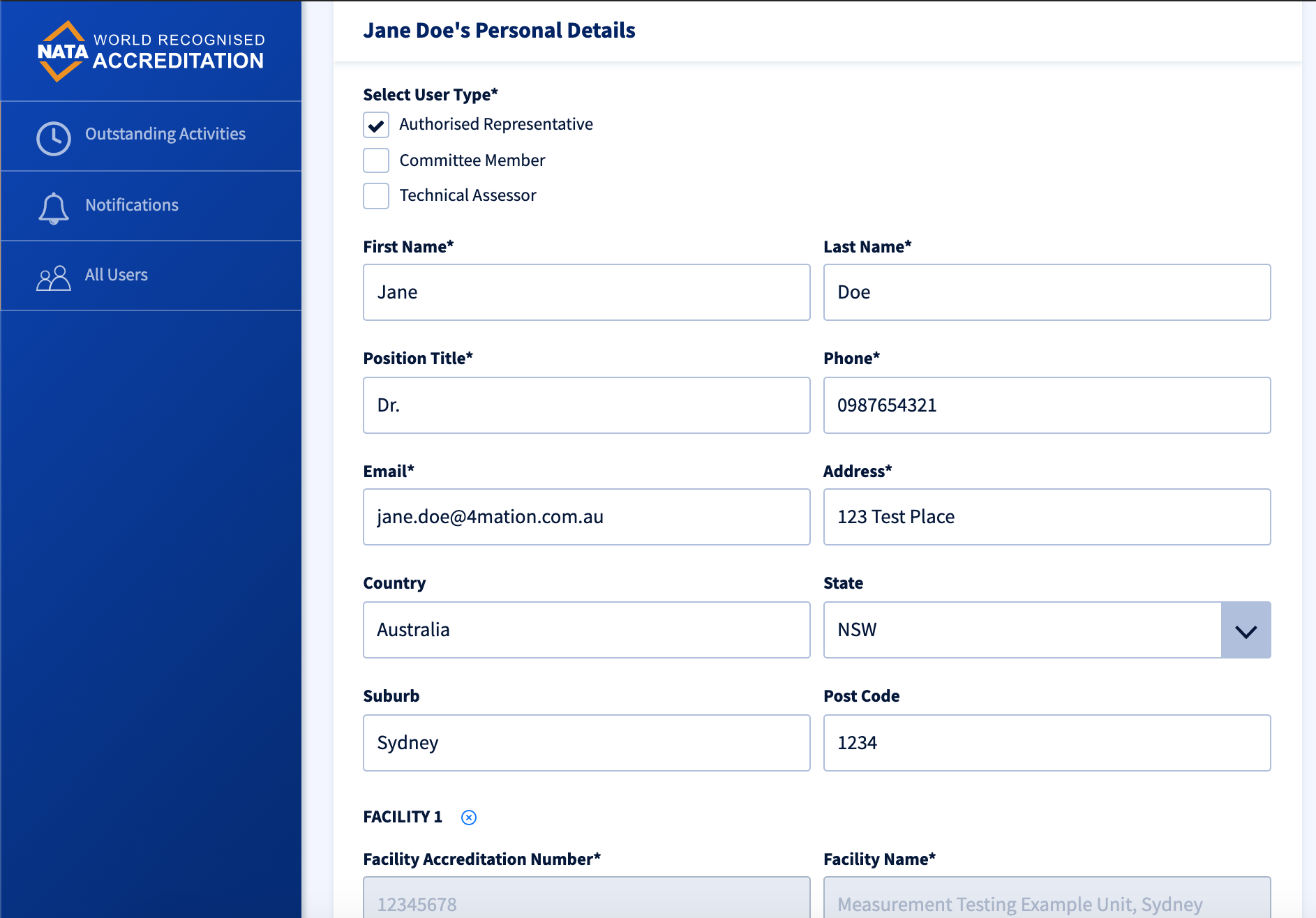National Association of Testing Authorities
Accreditation system driving efficiency and streamlining processes: NATA
4mation built a secure integrated interface for NATA’s accreditation system, consolidating job information and reducing manual administration of assessments via email. With over 5,000 active users, the custom-built web portal enables faster communication, better collaboration and an improved user experience for NATA and their stakeholders.
The story
The National Association of Testing Authorities Australia (NATA) is the nation’s leading body assessing the technical competence of organisations, from mining and construction materials to health and pathology services. Moreover, with every lab in Australia needing NATA accreditation, simplifying the accreditation process for all parties was critical.
Every person in the accreditation process needed easy access to information from NATA’s core information management systems to do their job faster. Rather than using email and manually uploading files into systems, only NATA could access, both NATA and their stakeholders needed a scalable, all-in-one portal.

“It was a significant project for NATA and 4mation did a great job, I really enjoyed working with them. We have received some wonderful feedback from our Portal users since the launch and it’s great to achieve a platform that integrates with our systems and caters for our needs.”
Shweta Vaghela UI/UX Functional Analyst
“The web portal now has the functionality we need to improve the collaboration between our staff and stakeholders. The team at 4mation were thorough in their investigation of requirements, and we worked together to achieve a design that provides a great user experience, whilst delivering a secure, and responsive web portal.”
Rob Passam General Manager ICT
The challenge
The NATA accreditation system is made up of two portals:
1. A Committee Portal for committee members and governing groups, including discussion forums, document sharing and searching and group communication
2. A Jobs Portal for external users to access information on their role, including job statuses and invoice information, retrieved from NATA’s systems.

Committee Portal
Previously committee members did not have a platform to collaborate and connect on topics of interest. For instance, members were emailing everything to each other and attaching documents, making it hard to keep track of communications and losing references to important files and discussions. Referencing committee discussions via email was a painful experience and managing the correct recipients according to the committees they belonged to was also too complicated and time-consuming to do via email.
Similarly, NATA needed a way for committee members to engage in discussions with other committee members, and provide committee administrators with an easy way to maintain committee membership. Administrators also needed to provide different file permission access for meeting documents amongst their members.
The committee portal allows committee members to facilitate discussions through posts and threads to follow discussions and receive updates. In addition, committee admins can schedule meetings through a Calendar feature with notifications sent to all members.
NATA required the ability to search documents uploaded into the system and the content they contain. 4mation implemented an independent and scalable system to search the document’s content and index them on a user’s authorisation basis. In addition, the system implemented using NodeJS and Apache Tika allowed role-based document search for over a million documents.
With security as a priority, 4mation worked closely with NATA to identify a flexible permission structure. This ensured the right users and user groups have access to the correct files.
Jobs Portal
4mation developed an interface that seamlessly integrated with NATA’s core business systems:
- Electronic document and records management (EDRMS)
- Accreditation information management system. (A bespoke CRM & ERP enterprise application)
- Accounting software
The interface we built takes information from these systems and provides user and role-specific information about job statuses and documentation.
Stakeholders including authorised representatives of the clients NATA assesses technical assessors who accompany NATA to provide technical expertise, and various committees all needed access.
Therefore it was important that the wrong parties did not get access to critical information. It was a complex challenge to overcome. Particularly for users and user groups that required specific access to documents and functionality. Through testing and discussions with NATA, we created user roles enabling this to happen.
The following technologies were used:
| Technology | How was the technology used? |
| Vue Js + Laravel | VueJS enabled us to create a responsive, state-managed, fast and self-guided user interface for the Web Portal. Whereas Laravel was used to implement secure, maintainable, scalable and highly-formant API’s which are used in the front-end and in other integrated applications |
| AWS + Terraforms | Terraforms enables us to develop the whole data infrastructure as code. This allows us to spawn up multiple environments when needed and easily tear them down. Terrarforms saves a high cost of infrastructure in combination with AWS autoscaling, with fully automated DevOps pipelines making it easier and seamless to deploy, test and scale the NATA Portal. |
| .Net core | .Net core was used to build a multithreaded, high-performance console application to sync documentation; running under the NATA DMZ. |
| AWS Lambda and Step Function | Provides efficient, traceable and scalable syncing of jobs, sites, facilities, invoices and users between the NATA Portal and their AIMS System. |
| Other AWS services | S3, CloudFront, API Gateway, RDS, ec2 and other essential services were used to manage the documents, database, deployments, VPN, security, delivery, scaling and high availability. |
Security
NATA required no third-party applications in the portal, so we built a custom two-factor authentication system and discussion forum. All documents used by the NATA portal are virus scanned, and the portal was extensively and independently penetration tested to ensure it was secure.

The result
The portal is an important part of NATA’s daily operation, allowing better collaboration between stakeholders.
Our agile way of working allowed NATA the flexibility to learn from regular releases, gather feedback from users and improve the solution as development progressed.
Since launch, the new portal has:
- processed over 4,000 accreditation jobs
- synced over 5,000 documents per hour
- provided access to over 5,000 active users
Job-status visibility and document search has created a more faster way of working. As a result, NATA has a powerful communication hub to collaborate and connect on topics.
Above all, this solution is a stable foundation that NATA can build on as they continue to simplify its operations. 4mation looks forward to working with NATA on its accreditation system and helping them on this journey.

